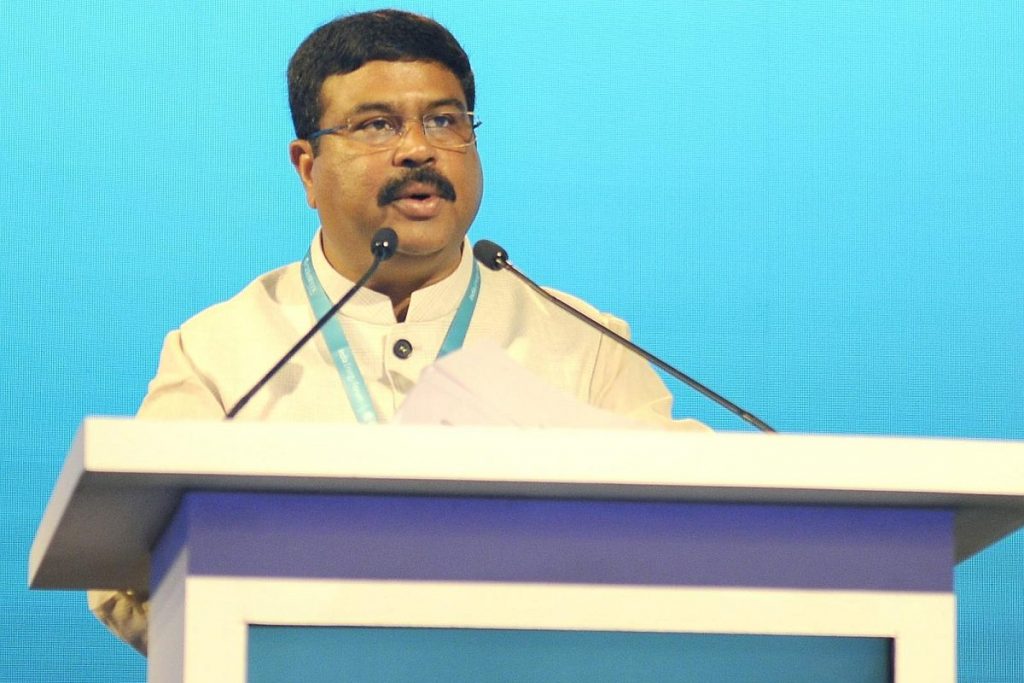New Delhi: India will see a massive USD 100 billion investment in creating oil and gas infrastructure over the next five years as the world’s third-largest energy consumer steps up spending to meet rising demand.
Speaking at KPMG’s Enrich 2019 conference, he said India will chart its own course of energy transition in a responsible manner even as it is said to be a key driver of global energy demand in the coming decades.
“India will see an investment of USD 100 billion by 2024 in oil refining, pipelines, city gas distribution networks, and LNG terminals,” he said.
Of this, USD 60 billion will flow into the creation of gas infrastructures such as pipelines, city gas networks, and import terminals, he said.
He said the country wants more foreign investment inflow into upstream oil and gas exploration and production as well as downstream fuel marketing and petrochemicals.
India will secure capital, world-class technology and implement any policy reforms needed to become an international energy leader, he said. “India wants to be the new destination for global energy players.”
Several reforms including opening up of fuel retailing to non-oil companies and overhaul of exploration licensing policy are aimed at attracting investments, he said.
India is the third-largest energy consumer in the world in absolute terms after the US and China. However, per capita energy consumption in India is only about one-third of the world’s average.
“This makes it imperative to ensure energy justice to all, which essentially means access to energy in an affordable and sustainable manner,” he said.
Given its huge energy appetite and growth potential, India will be the key driver of global energy demand in the coming decades, he said.
No single source can meet the energy demand, he said. “India will chart its own course of the energy transition in a responsible manner and would greatly influence global energy transition,” he said.
“In India, we are finding ways to achieve the twin objectives of more energy and less carbon through a healthy mix of all commercially-viable energy sources. India will chart its own course of the energy transition in a responsible manner.”
Speaking about sustainable growth, Pradhan said the centrality of energy growth in a sustainable manner is a high priority of the government.
There is unprecedented advancement, on both the demand and supply sides of the equation, as the world and India seek out more benign methods to advance global growth and welfare.
He said the trajectory to end energy poverty in India, as compared to the rest of the world, would be based on special national circumstances. This is more so when the average Indian lives only on a third of the per capita consumption of energy that the United Nations believes is necessary for human well-being.
Talking about reform measures, the Minister said the Government has undertaken several structural reforms in the last 5 years to create a business-friendly environment.
These reforms include insolvency and bankruptcy code, tax reforms and intellectual property reforms. The hydrocarbon sector has also been overhauled through a series of business-friendly policy measures.
Reiterating his Government’s commitment towards building a gas-based economy, Pradhan said the Government is making all efforts to move towards a gas-based economy. An estimated investment of USD 60 billion is lined up in developing gas infrastructure, which includes pipelines, city gas distribution, and LNG terminals.
Pradhan also talked about the National Biofuel policy which focuses on waste-to-wealth creation and targets to generate various types of bio-fuels from agriculture residue and municipal waste.
Giving a glimpse of India’s path of the energy transition, Pradhan said the share of renewable in electricity capacity has significantly gone up now to 22 per cent from around 10 per cent in 2014-15.
Also, the ethanol blending percentage in petrol has risen from 0.67 per cent in 2012-13 to close to 6 per cent now.
“Finally more than 95 per cent households now have access to LPG, making their kitchens smoke free,” he said.
PTI
